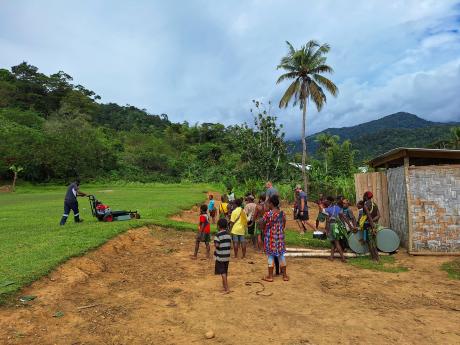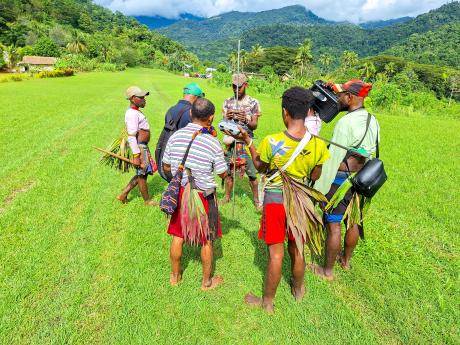
Decades after building his first airstrip, Peter Pyandea remains on the frontlines of providing access to isolated communities. As part of the Rural Airstrip Agency (RAA) of Papua New Guinea, and through flights made possible by MAF, he helps ensure that life-saving airstrips stay open, and communities stay connected.
Story by Mandy Glass
Long before Peter Pyandea joined the Rural Airstrip Agency, his hands-on dedication to developing remote communities had already laid a solid foundation for MAF’s continuing presence in Papua New Guinea’s highlands.
“I was trained as a theologian and worked in the field for about four years,” Peter said.
“Through church projects, I helped build schools, health centres, and airstrips.”
Peter helped construct key airstrips like Malamaunda and Wanakipa, places still served by MAF today.
“One airstrip took us over 10 years to build – from a muddy swamp to a functioning runway,” he said, referring to Kaiam airstrip which was opened in 2014.
It’s about serving the community—not just physically, but in body and spirit. Together, MAF and RAA keep these lifelines open.
Peter’s passion for serving rural communities eventually led him to join the agency nearly a decade ago. A public–private partnership with MAF and the PNG government, RAA helps communities restore and maintain airstrips—linking them to healthcare, education, and markets.
“Since then, I’ve been part of the ongoing work maintaining these vital airstrips,” he said.

Rural airstrips provide lifelines, linking isolated communities to medevacs, supplies, and the outside world. MAF enables RAA’s airstrip upkeep by flying in teams and equipment.
MAF regularly transports RAA teams, an engineer, field supervisor, and mechanic—with lawnmowers, tools, and parts.
In May, Arjan Paas, MAF’s Flight Operations Manager, flew a RAA team to Yifki and Hewa.
“Yifki was mainly a fuel drop-off,” said Arjan. “One team member did some ground testing, and others spoke with the community about maintenance.”
They continued to Hewa, where more testing was done.
“There, one RAA officer did the ground tests while two others fixed the broken belt on the lawnmower. They got it running again and tested it out while we were there.”
“Visits like these help the communities to keep the lawnmowers running, the grass short, and the drainage clear. This improves the airstrip surface—and that means safer landings for us pilots.”

In June, RAA visited Pyarulama and Yambaitok with equipment including welded steel rings to fix their windsocks.
Verolyn Nombri Frank, RAA’s Field Operations Manager, explains their process: “Our ground time is one hour. The engineer conducts a survey to check for any needed repairs or restoration, the mechanic services the lawnmower, and the field supervisor consults with the local Airstrip Maintenance Officers (AMOs).”
AMOs are local community members trained by RAA to maintain the airstrips year-round.
MAF pilot Jan Klassen, who flew the team to Yambaitok, appreciates the work RAA is doing, particularly the community involvement.
“It’s great to have these guys working on the strips,” Jan said. “They improve the general conditions of the strip—testing whether the ground is strong enough and ensuring standards are met. That helps us pilots a lot. We can rely on well-maintained strips.”
Peter sums up the partnership’s impact.
“It’s about serving the community—not just physically, but in body and spirit. Together, MAF and RAA keep these lifelines open.”
